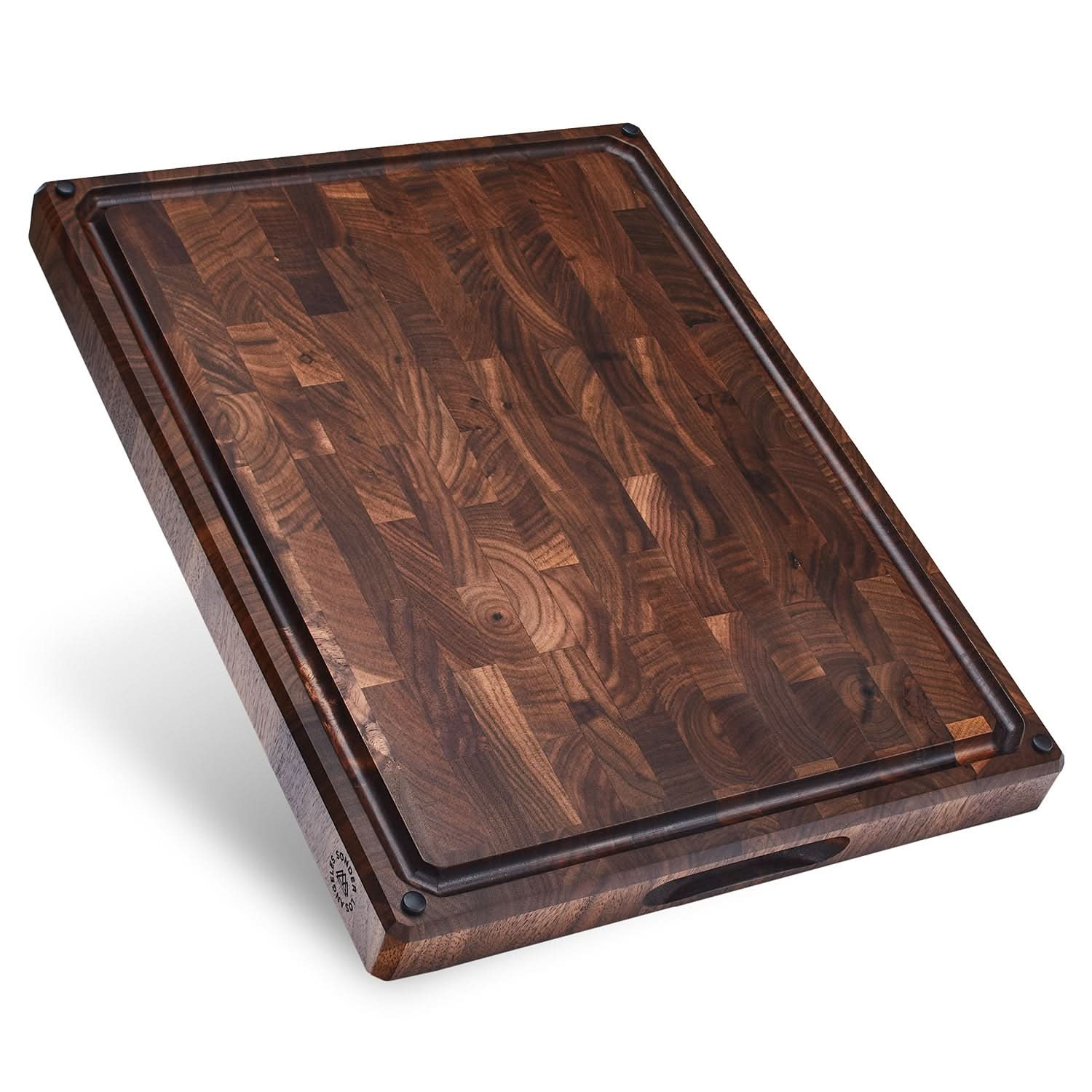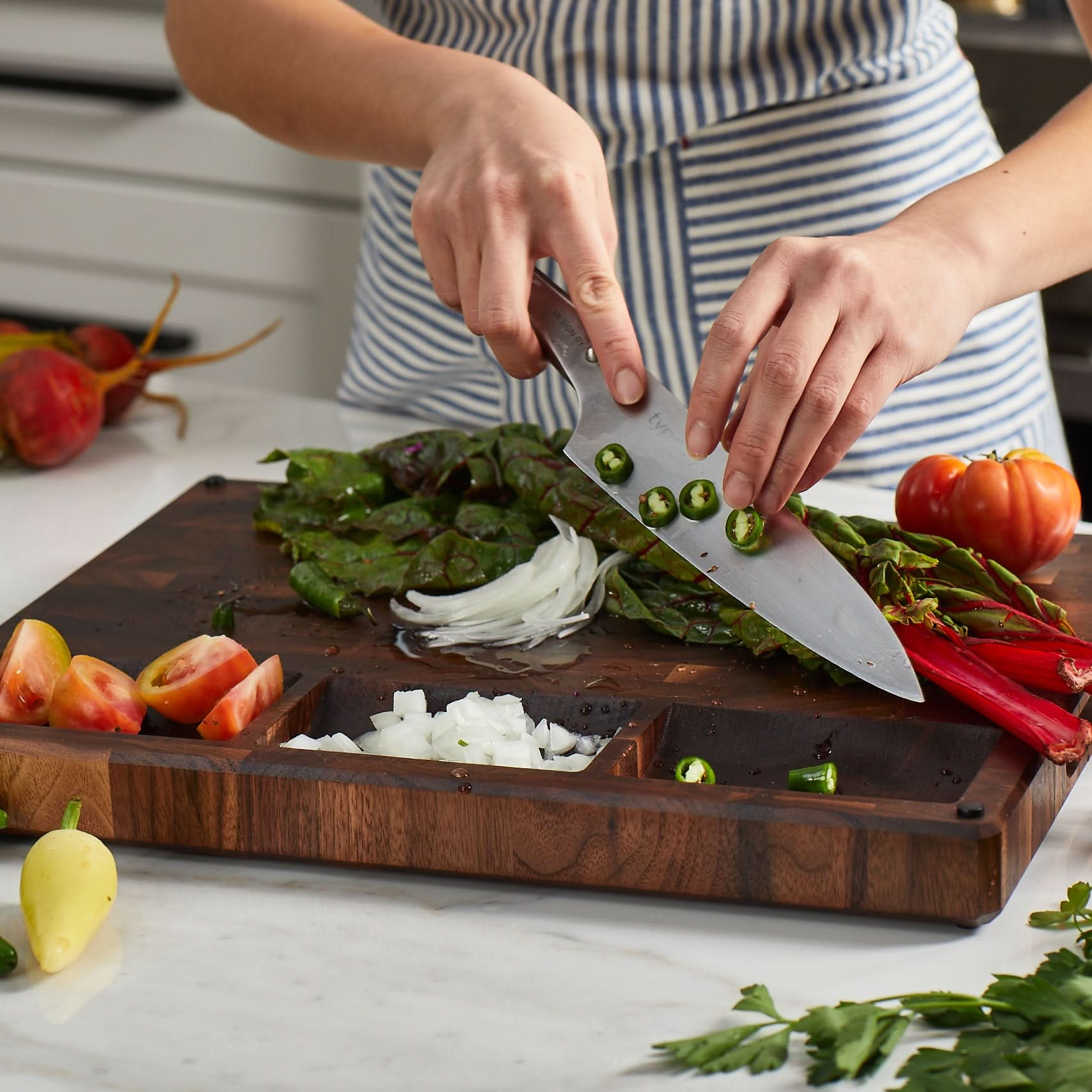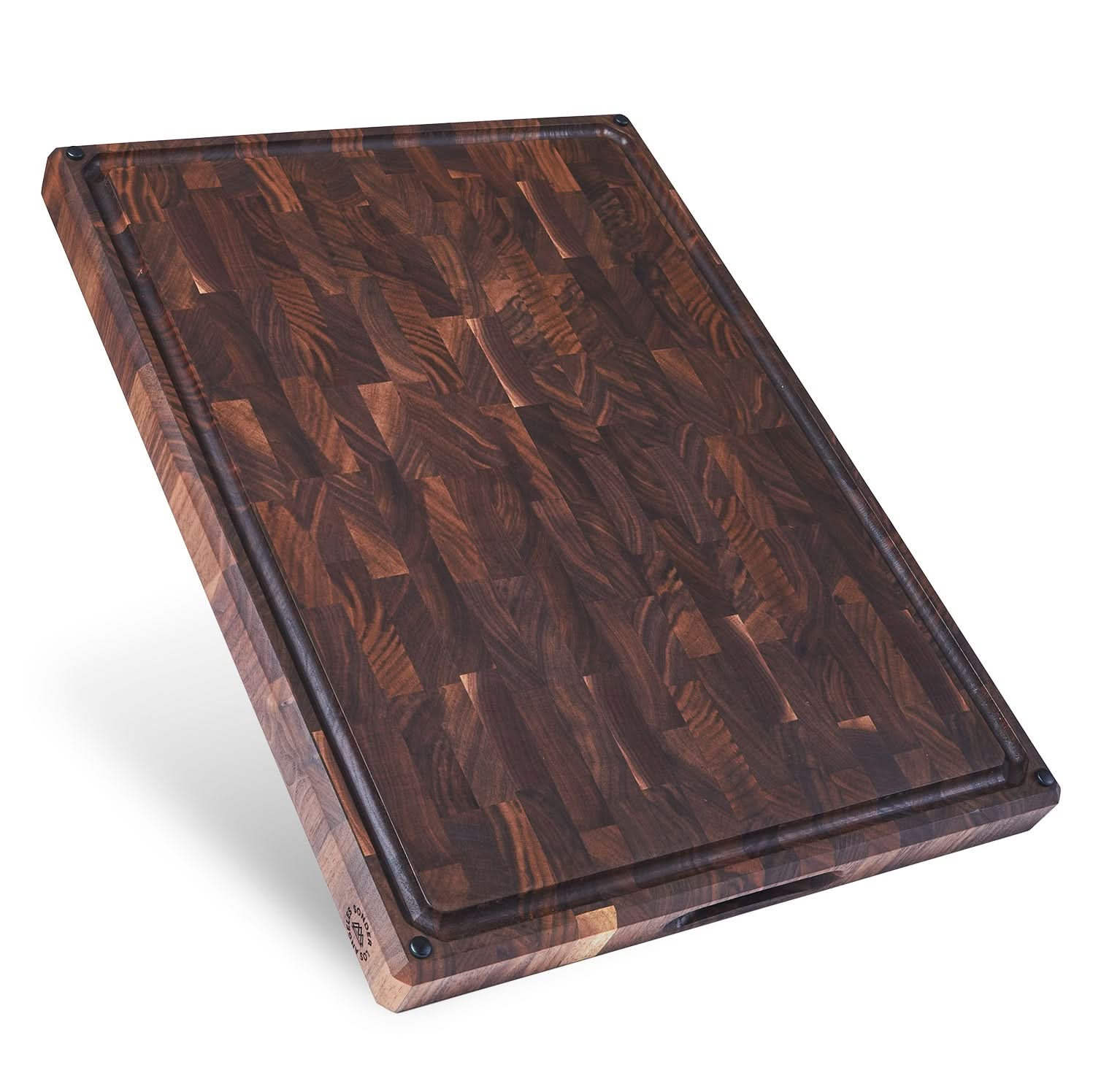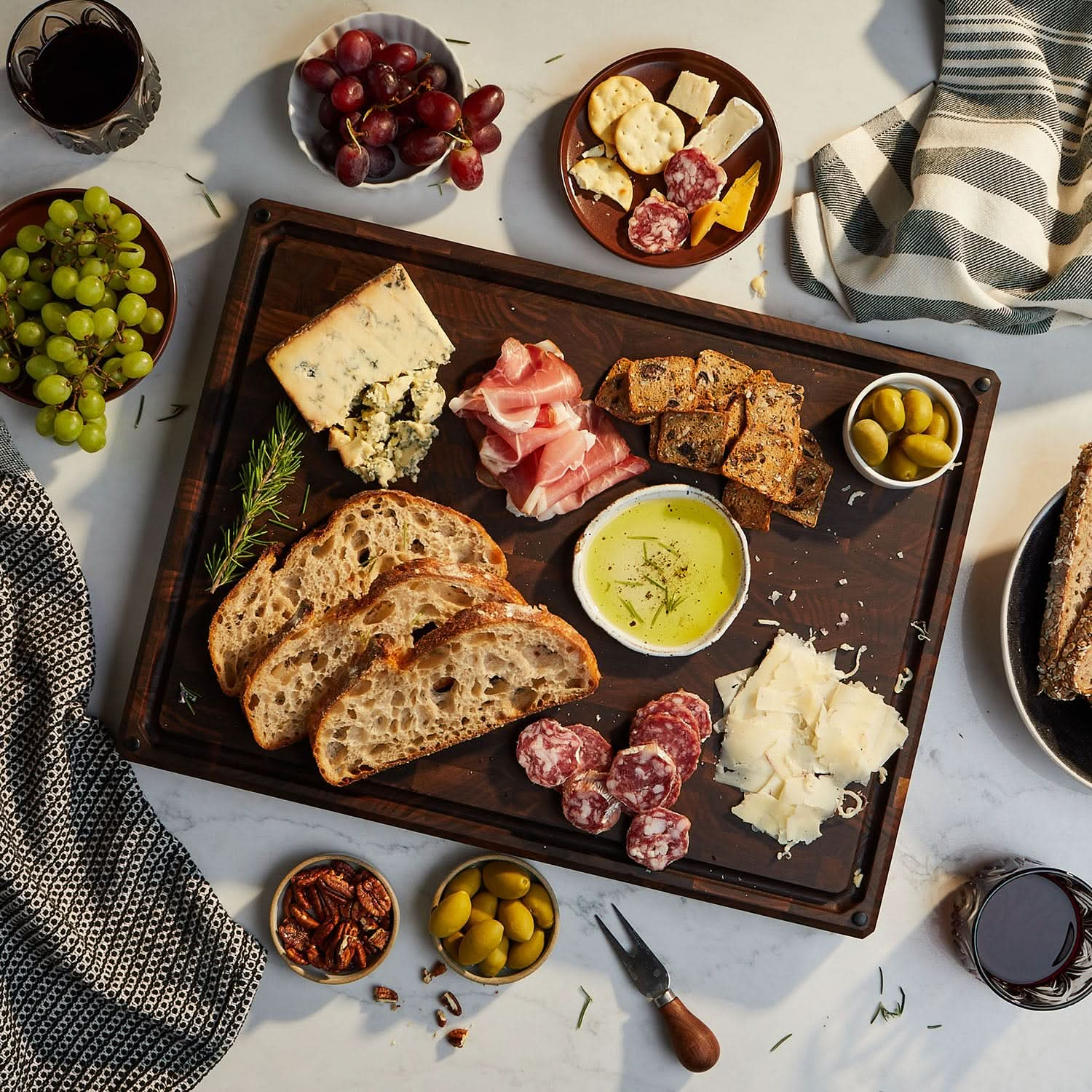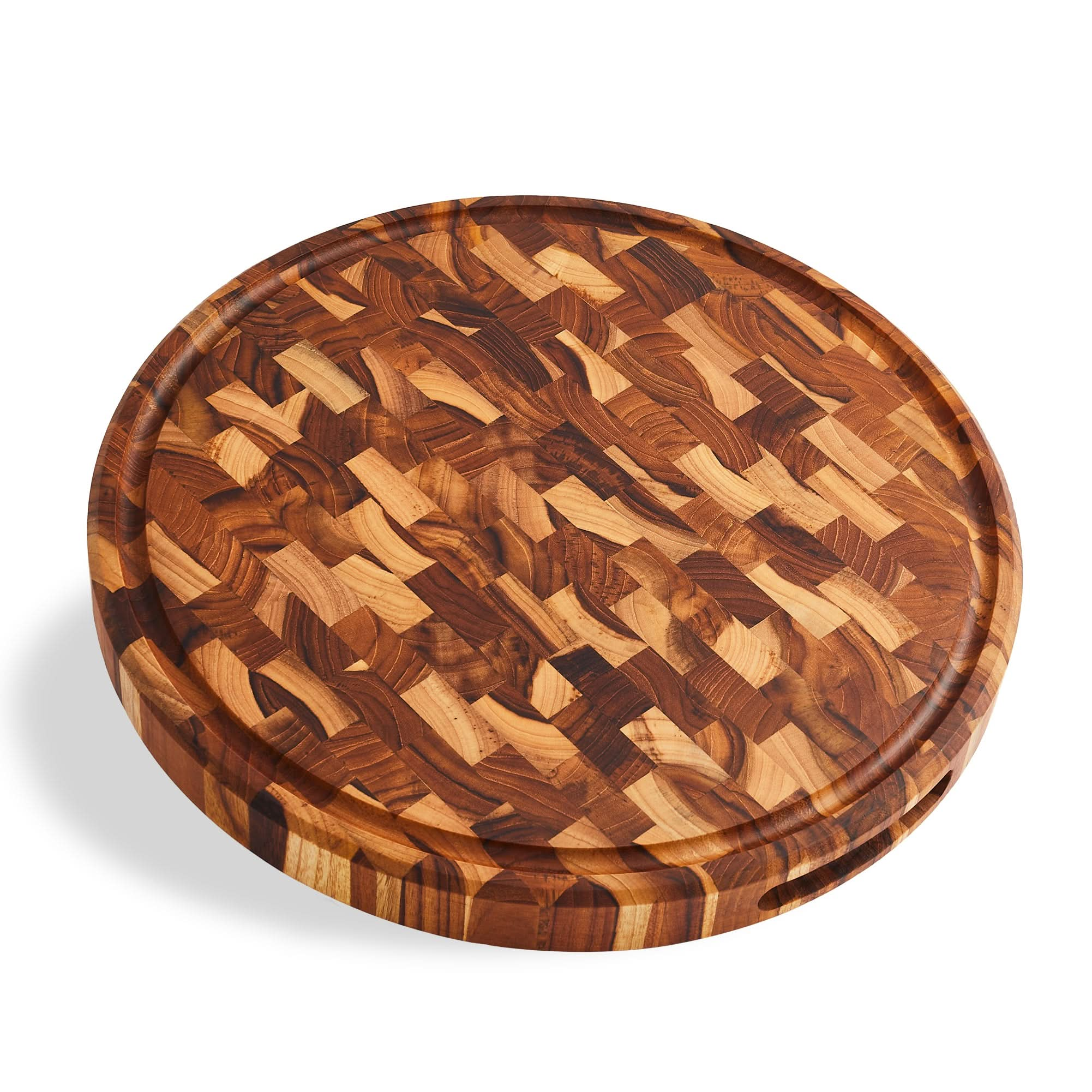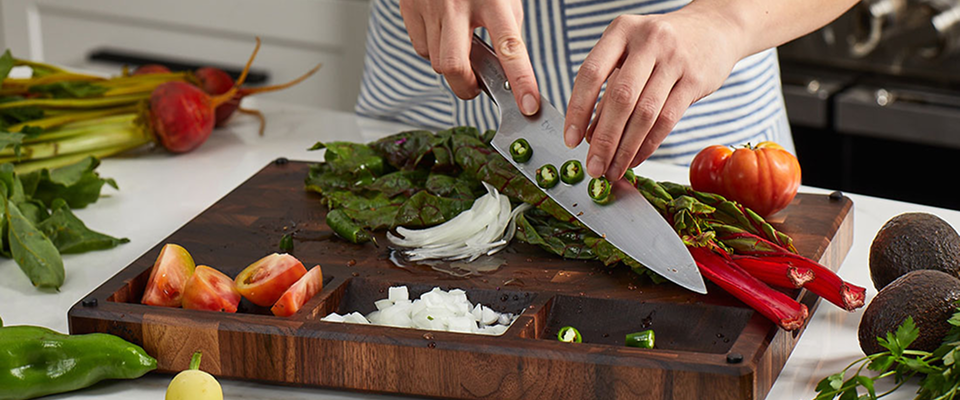
End-grain Construction For Exceptional Knife Friendliness
End-grain boards are designed with the wood fibers facing upward, allowing your knife to slice between the fibers instead of across them. This unique construction absorbs impact, keeps your blades sharper for longer, and even “self-heals” minor cuts as the fibers naturally close back up.
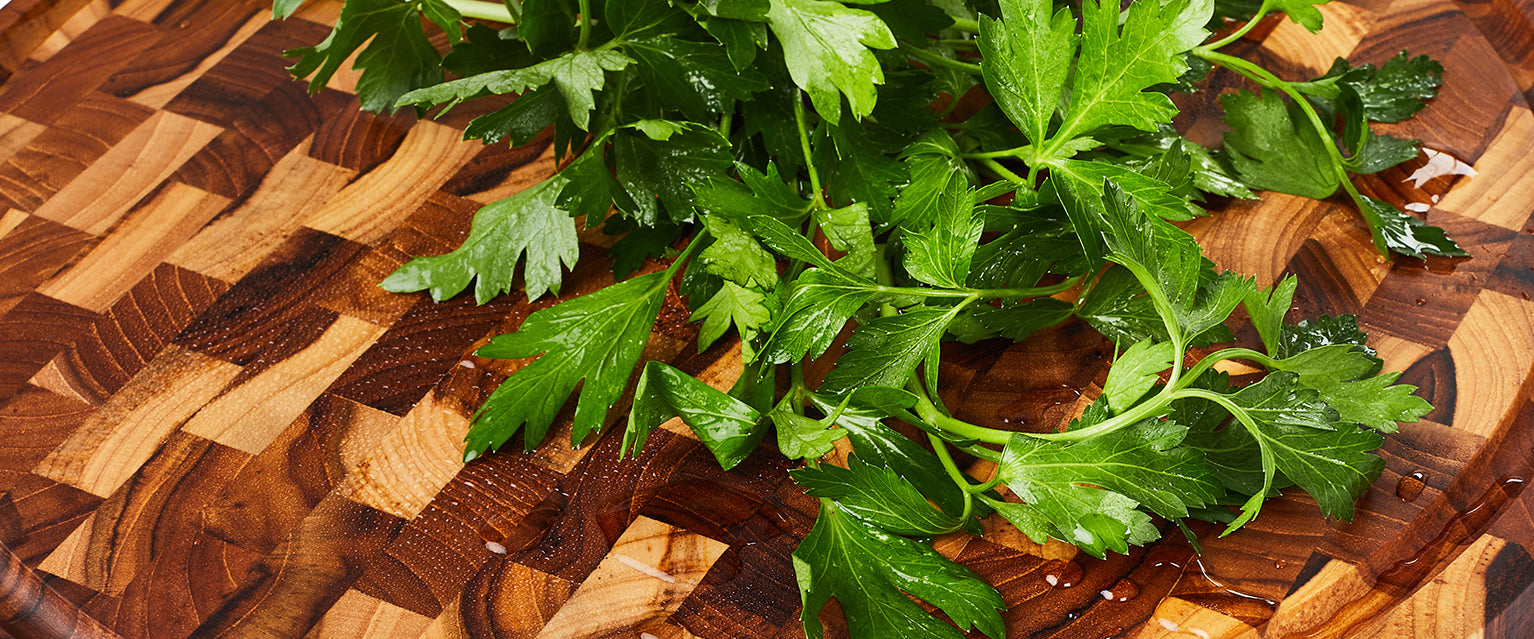
Superior Longevity and Durability
These boards bring the weight and stability you want for serious kitchen work. End-grain construction isn’t just gentle on knives, but also highly resistant to deep scarring, helping your board last for decades with proper care. Flip to the flat side for kneading dough and rolling out pasta, or keep the grooved side ready for juicy cuts of meat straight from the grill.
Filters
Frequently Asked Questions about End-grain Cutting Boards
An end-grain cutting board showcases the wood’s rings on its surface. The fibers are facing upward and absorb knife impact, making these boards gentler on your blades and naturally resistant to deep cuts. As a result, end-grain cutting boards are a top choice for those seeking both beauty and functionality.
End-grain cutting boards are crafted by arranging small blocks of wood so the ends of the grain run upward, giving them a checkerboard or brick-like look and a soft-yet-sturdy feel. This allows knives to slice between the wood fibers rather than across them.
The list goes on. End-grain cutting boards are easy on knives, resistant to wear, and age beautifully. Thanks to the self-healing wood fibers, they don’t scar as easily, and they’re a favorite among kitchen pros for a reason.
Each knife cut slices between the wood fibers—not directly through them—making these boards more resistant to scratches and knife marks and helping keep your knife edges sharper for longer. They can even “self-heal” minor cuts, as the wood fibers naturally close back up after you’ve finished slicing and dicing. As long as the board is well oiled and properly cared for, of course.
A quality end-grain cutting board should be at least 1.5 inches thick. This adds weight and stability while minimizing warping, ideal balance of durability and ease of use.
Edge-grain boards are cut with the grain’s edge so the wood fibers are aligned horizontally. End-grain boards are cut along the grain’s end so that the wood fibers are exposed and facing up.
Wash by hand using mild soap and warm water, then rinse and pat dry immediately before propping up the board to fully air dry. Never soak your end-grain cutting board or put it in the dishwasher. Regular oiling is also crucial to prevent the wood from drying out and cracking. Use mild dish soap—harsh soaps with alcohol (like Dawn Powerwash) can strip the wood’s natural oils, causing it to dry out.
Use a food-grade mineral oil to deeply condition your board, allowing it to absorb into the end-grain and protect the wood from drying out, which helps prevent cracking and warping. For the best results, always follow with a layer of beeswax after oiling to seal in moisture, or choose a mineral oil and beeswax blend for an easy, all-in-one solution. Oil your end-grain board every 2 to 3 weeks, as these boards are more “thirsty” than edge-grain boards. Avoid vegetable oils, as they can go rancid and damage the wood.

